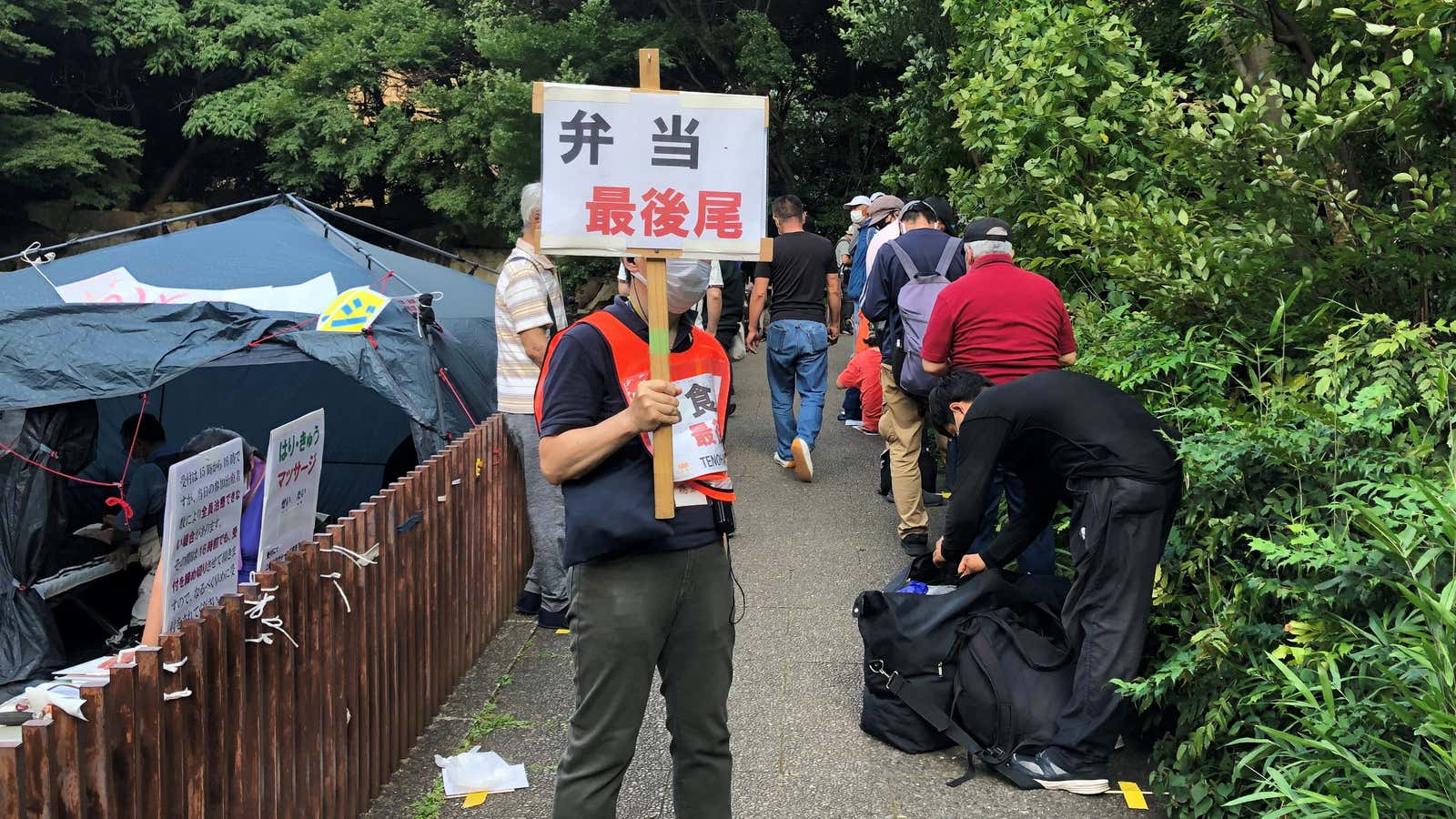By US standards, Japan’s inflation rate in May might feel paltry. Year on year, the consumer price index rose 2.5%, compared to a heated 8.6% in the US that same month.
But to a country that has grown unused to inflation over the past three decades, even 2.5% hurts. Japan’s current encounter with inflation shows how factors like the Russia-Ukraine war, supply chain snags, and oil prices are combining to affect even one of the world’s most deflation-prone economies.
The cost of sushi in Japan is going up
After several financial institutions collapsed in the late 1990s, Japan fell into a prolonged spell of deflation; except during some surges of commodity prices, the inflation rate remained negative until around 2015, and in the low vicinity of 1% thereafter. Japan’s GDP and its citizens’ wealth stagnated. Wages experienced relatively little growth as well—which makes this current bout of inflation even harder to deal with.
The signs are all over. The price of Umaibo, a puffed corn snack, has gone up 20% from its original 10 yen ($0.08)—a price it maintained for more than 40 years. Sushiro, Japan’s leading conveyer belt sushi chain, is hiking the price of its 110-yen plates after four decades to 120 yen. Schools have replaced expensive fresh fruit with cheaper jelly, and the cost of onions has doubled within a year.
This puts Japanese policymakers in a bind. Discontent among voters who have no recent experience of inflation is such a clear political danger that the Japanese government earmarked $21 billion to relieve the pinch of higher food and energy costs. At the same time, a cycle of low-to-moderate inflation could rouse the economy. Hirofumi Suzuki, an economist at Sumitomo Mitsui Banking, told Bloomberg: “This is probably the best chance for the economy to turn inflationary in a long while.”
